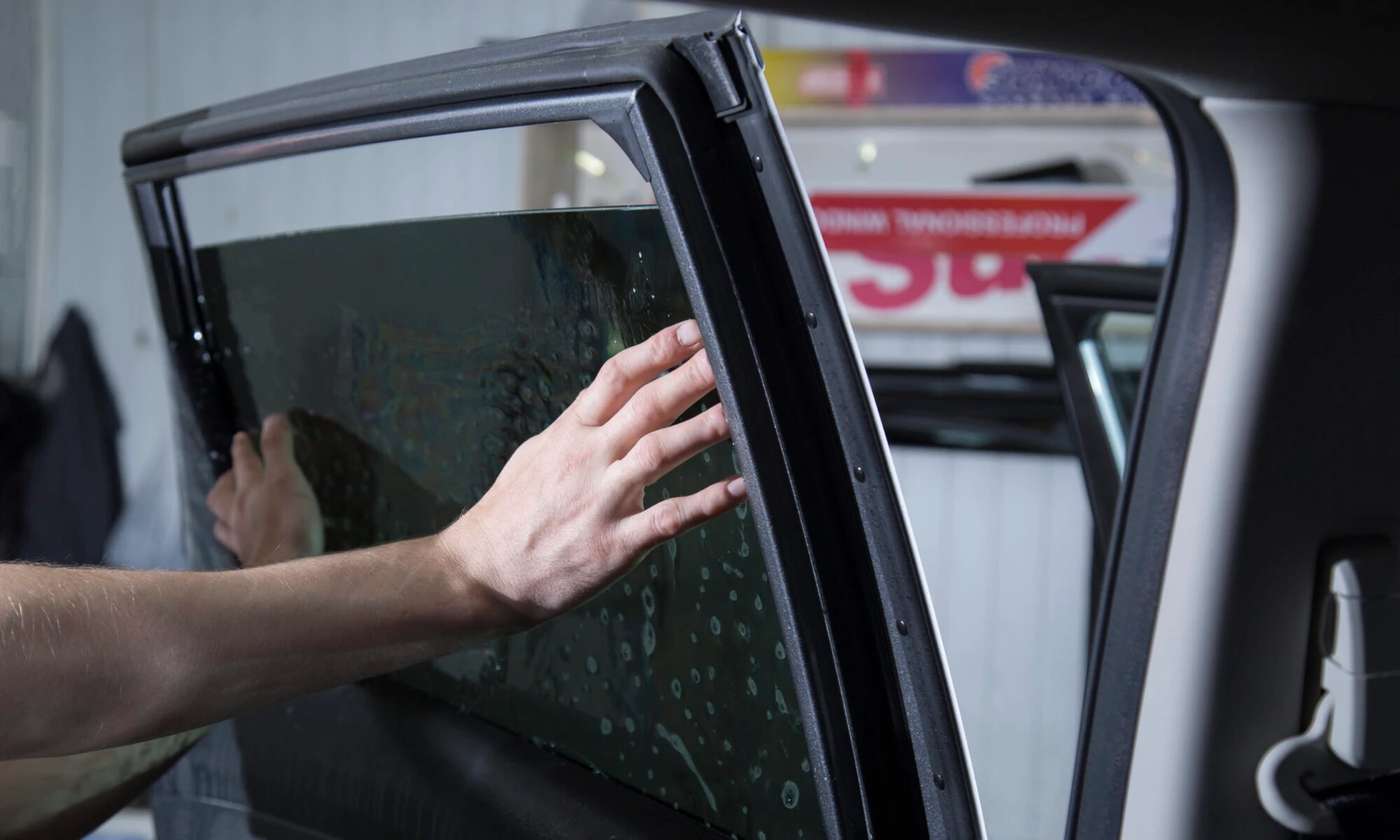The Refine of Expert Home Window Tinting Explained
From choosing the right movie type to the careful preparation of windows, each step plays a vital role in accomplishing a remarkable application. Following these preliminary prep work, the careful cutting and application of the film demand precision to prevent blemishes.
Picking the Right Window Movie
The preliminary consideration is the kind of movie, which can vary from dyed, metalized, to ceramic films (window tinting). Colored movies primarily provide personal privacy and visual enhancement, while metalized films mirror warm and UV rays, boosting energy effectiveness.
Next, think about the film's Visible Light Transmission (VLT) portion, which establishes just how much light goes into the space. A reduced VLT provides higher privacy and warmth rejection but might reduce natural light considerably. In addition, the film's solar heat gain coefficient (SHGC) is important; a lower SHGC suggests better thermal performance, aiding to preserve interior comfort.

Preparing the Windows
As soon as the appropriate home window film has actually been chosen, the next step is thoroughly preparing the windows for setup. This prep work is crucial for attaining optimum adhesion and ensuring a flawless look post-installation.
The very first job involves cleaning up the home windows meticulously (window tinting). A premium glass cleanser is crucial, ideally one that is ammonia-free to stay clear of damaging any type of window seals or tint materials. Using a lint-free cloth or paper towels, service technicians should eliminate any type of dirt, dirt, or grease, paying unique interest to the edges and edges where particles usually builds up

Cutting the Film
An exact method to reducing the film is crucial for making certain a best fit on the ready home windows. This step requires both skill and interest to information, as mistakes can lead to undesirable voids or overlaps that concession the aesthetic and practical high qualities of the color.
Before reducing, the specialist ought to gauge the window dimensions properly, accounting for any type of one-of-a-kind shapes or contours. It is suggested to use high-grade window movie, as this product tends to be more forgiving during the cutting process. The movie is typically laid level on a tidy, smooth surface area, and a sharp utility blade is employed to make certain clean sides.
To achieve ideal outcomes, several professionals use layouts created from previous installations or utilize software application to create precise patterns. A typical strategy involves including an added margin to the theme, enabling adjustments during the application phase.
Moreover, reducing the movie in a controlled atmosphere lessens the risk of contaminants impacting the adhesive side. By sticking to these thorough methods, home window tinting professionals can ensure that the movie not just fits seamlessly however likewise does effectively gradually, improving both look and visit the website performance.
Applying the Color
After diligently cutting the film to the right dimensions, the following action involves applying the color to the window surface area. This process begins with making certain that the home window is clean and without any type of dirt, particles, or deposits that might affect attachment. A specific cleaning option is typically used, complied with by thorough drying out with a lint-free cloth.
Once the surface area is prepared, the installer will thoroughly position the tint movie against the glass. It is crucial to line up the film precisely to prevent misplacement, as any mistakes can result in an amateur appearance. To promote this, the installer might use a light haze of application service on the adhesive side of the film, permitting minor rearranging if needed.
Making use of a squeegee, the installer will then start to press the film onto the glass, functioning from the center in an outward direction to eliminate air bubbles and make certain a firm bond. This strategy is vital, as it guarantees a smooth and flawless surface. Throughout the application, interest to detail is crucial to avoid creases or imperfections, making sure that the tint not just boosts aesthetic appeals yet additionally supplies the desired functionality.
Last Inspection and Care
The final inspection is a critical action in the window tinting procedure, making certain that the installment meets both aesthetic and practical standards. Throughout this stage, professionals meticulously examine the set up tint for any flaws, such as bubbles, creases, or imbalances. A thorough analysis also consists of examining the adherence of the movie to the glass, as well as its harmony and overall appearance.
After the inspection, correct treatment and upkeep guidelines are provided to the client. It is important to educate them regarding discover this info here the recommended timeline for cleaning up the tinted home windows, usually recommending a delay of at the very least 1 month after installation to permit the adhesive to cure completely. Clients must be enlightened on ideal cleansing products and strategies, stressing the evasion of ammonia-based cleaners that can damage the tint.
In addition, experts ought to recommend customers on the value of routine upkeep to lengthen the life of the color. This consists of regular look for indicators of wear or damages and reacting quickly to any kind of concerns. By making certain a comprehensive final examination and giving clear treatment standards, window tinting professionals enhance consumer satisfaction and the long life of their job.
Final Thought
The specialist window tinting process includes a number of critical actions that make sure high-grade results. Selecting the proper film type, preparing the home windows meticulously, precisely reducing the film, and using it with accuracy are vital for achieving a remarkable surface. A thorough last assessment warranties that all criteria are fulfilled, while correct post-installation treatment is vital for maintaining the color's long life and performance. Sticking to these procedures eventually improves both my sources the aesthetic charm and capability of the tinted home windows.